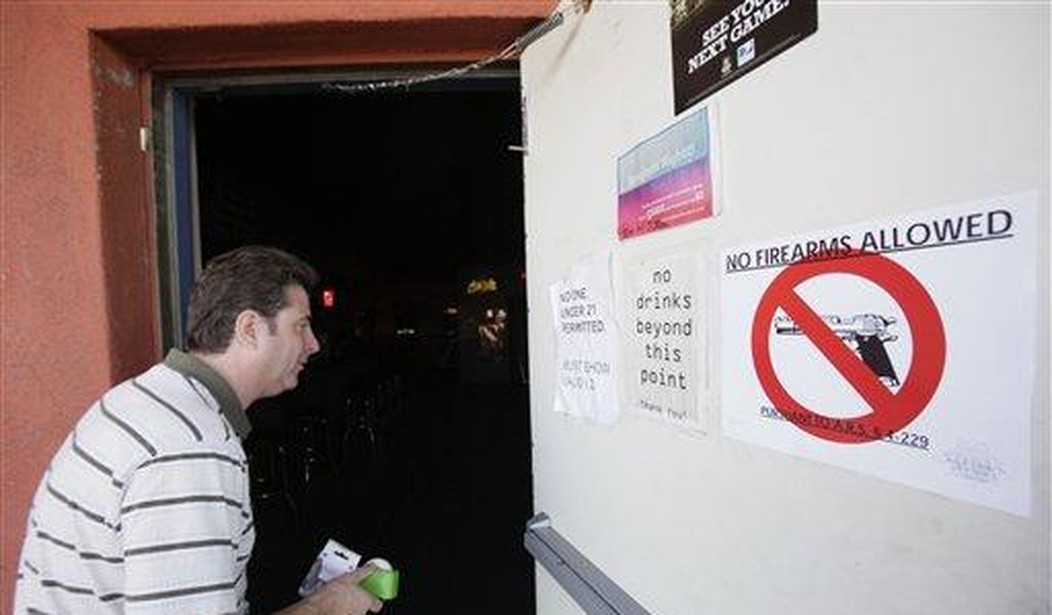When Maryland removed its “justifiable need” requirement for concealed carry licenses in the wake of the Bruen decision last year, the number of applicants hoping to exercise their right to bear arms exploded across the state, with a roughly eightfold increase reported in the last six months of 2022. While the number of concealed carry holders has grown, however, where they can carry has been greatly restricted.
Not only did lawmakers in Annapolis pass their own Bruen response bill, local officials in Montgomery County approved their own restrictions on the right to carry. Most of the heavily populated parts of the county now fall under the “sensitive places” where concealed carry is prohibited, thanks to a 100-yard “buffer zone” surrounding “sensitive places” like houses of worship, public parks, recreational and multipurpose exhibition facilities, and public libraries.
Maryland Shall Issue and several of its members filed suit in federal court challenging those restrictions, and the group’s request for an injunction is now before the Fourth Circuit Court of Appeals after it was denied by a U.S. District Court judge. On Monday, however, MSI got some legal backup in the form of an amicus brief filed by Montana Attorney General Austin Knudsen and 18 of his fellow AGs, who argue that the district court got it wrong and that Montgomery County officials haven’t been able to find historical analogues that would justify their prohibitions.
Heller found that the Second Amendment, ratified in 1791, “codified a preexisting right” that “was … rooted in ‘the natural right of resistance and self-preservation.’” So historical evidence close in time to the Amendment’s adoption provides the most relevant insight into its original meaning. Yet the County offers no evidence of any historical place-of-worship regulation between 1791 and 1868. None. Because the County bears the burden to rebut MSI’s presumptively constitutional right to bear arms in public, including at places of worship, its failure to produce evidence of similar laws during this period strongly suggests no such tradition existed.
But even if the district court is correct that historical evidence closer in time to the ratification of the Fourteenth Amendment is “equally if not more probative of the scope of the Second Amendment’s right to bear arms as applied to the states,” the County’s historical evidence still fails to support the existence of a historical tradition of similar place-of-worship restrictions. Rather, the County cobbles together a handful late nineteenth-century state and territorial statutes and local ordinances that shed little if any light on the original understanding of the scope of the public-carry right.
The same goes for the county’s prohibition on carrying in public parks, rec centers and multipurpose facilities, and libraries. As for the county’s “buffer zone”, Knudsen says there’s no historical evidence at all that lawful carry could be banned near “sensitive places”, at least not the broad categories of “gun-free zones” defined by Montgomery County.
To the extent that the County’s place-of-public-assembly restrictions apply to locations that are not “sensitive places” under Bruen and its progeny, its prohibition on carrying firearms within 100 yards of those locations violates the Second Amendment.
So, at a minimum, §57-11’s 100-yard buffer zone around places of worship, public parks,7 recreational and multipurpose exhibition facilities, and some government buildings is unconstitutional.
Nor does the County’s historical evidence support its broad bufferzone restriction. At most, its historical evidence provides limited support for buffer zones around polling places and other election sites. See JA856 (citing two Maryland laws imposing buffer zones around polling places and election sites and a Louisiana law imposing a buffer zone around an election registration site). But like the County’s other historical evidence, none of these laws pre-date Reconstruction, so they provide little insight into whether such restrictions align with the Second Amendment’s original meaning. And even if these laws were adequate historical analogues, it’s doubtful that three laws covering four Maryland counties and the State of Louisiana are enough to establish a historical tradition of similar regulations.
As Knudsen and the attorneys general of Alabama, Alaska, Arkansas, Georgia, Idaho, Indiana, Iowa, Kansas, Kentucky, Louisiana, Mississippi, Missouri, Nebraska, South Carolina, South Dakota, Texas, West Virginia, and Wyoming conclude, the flimsy evidence presented by Montgomery County largely consists of a small number of ordinances passed more than 20 years after Reconstruction.
Even if Reconstruction-era statutes and local ordinances provide more probative evidence of the Second Amendment’s original meaning, the County’s evidence still fails to identify relevantly similar historical analogues for §57-11’s public-carry restrictions discussed above. Sweeping aside the County’s irrelevant evidence yields only a handful of arguably relevant evidence supporting §57-11’s placeof-public-assembly restrictions—“surely too slender a reed on which to hang a historical tradition of restricting the right to public carry” in the locations challenged here.
The paucity of longstanding and widespread regulations similar to Montgomery County’s in the historical record should be enough to doom many of the newly-imposed “sensitive places,” at least under a fair reading of the Bruen decision. The trial court judge seems to have bent over backward to justify the county’s prohibitions, but hopefully the Fourth Circuit panel considering MSI’s motion for an injunction will faithfully apply the history, text, tradition test laid out by the Supreme Court rather than look for a way around it.









